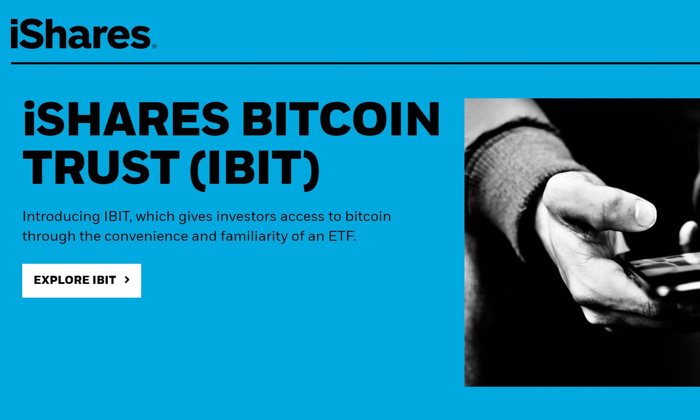Web3 privacy concerns are at the forefront of discussions as blockchain technology’s transparency starts to reveal vulnerabilities that may compromise user empowerment. While Web3 promises decentralization and control over data, it simultaneously exposes users to significant privacy risks that can lead to unwanted scrutiny and profiling by third parties. Unlike traditional financial systems, which prioritize user confidentiality—think of a simple coffee shop transaction where no one knows what you bought—blockchain-based transactions leave an indelible mark on a public ledger, making it challenging to maintain privacy. Furthermore, the notion that smart contracts enhance security is challenged by the potential for data leaks that can occur through aggregated transaction histories. As we delve into the intricacies of data privacy in Web3, it becomes clear that while the technology advances, the risks it introduces necessitate a reevaluation of user safeguards and strategies for protecting personal information.
The rise of decentralized web technologies has sparked a debate about the array of privacy issues that come with it, commonly referred to as Web3 privacy challenges. As blockchain systems push for maximum openness, users find themselves vulnerable to exposure unlike any traditional platforms. Financial interactions that would typically remain discreet are now permanent records that can be reviewed by anyone with access to the network. This shift underscores the pressing need for solutions that address the delicate balance between blockchain’s inherent transparency and the safety of user data. In navigating this new terrain, it is vital to rethink how we approach digital autonomy and confidentiality to empower individuals in an increasingly connected world.
Understanding Web3 User Empowerment
Web3 has promised to revolutionize user empowerment by decentralizing control over data and transactions. However, despite these lofty claims, the reality is that it often leaves individuals more vulnerable. The very nature of blockchain technology—with its emphasis on transparency—can inadvertently expose users to risks that do not exist in traditional systems. Users might believe that they have greater power and privacy, yet this can be misleading, as their financial habits and identities can still be traced through pseudonymous wallet addresses.
Furthermore, the empowerment narrative surrounding Web3 raises concerns regarding how much control users genuinely possess. While blockchain enables individuals to manage their own data, this does not equate to complete privacy. The illusion of autonomy can be deceptive when individuals are ultimately compelled to reveal sensitive information to participate in certain services or exchanges. Enhanced user empowerment must, therefore, be redefined to prioritize actual data privacy and security.
Web3 Privacy Concerns: Risks in a Transparent System
Web3 heralds an era of radical transparency that its proponents see as beneficial. However, this transparency comes with significant privacy concerns that users must navigate. Unlike traditional financial systems that compartmentalize transaction details and often protect user identities, the public nature of blockchain transactions can expose users far more than they realize. This situation can lead to targeted phishing attacks and financial profiling, as seen in past incidents where detailed transaction histories were exploited by malicious actors to identify high-value targets.
Moreover, the ability for anyone to analyze transaction patterns complicates user privacy even further. Even pseudonymous transactions can reveal sensitive information when linked to behavioral trends or centralized exchanges requiring identity verification. Users must remain vigilant about the cumulative exposure that arises from varied transactions and interactions within the Web3 space, which paradoxically undermines the privacy protections that many associate with these technologies.
Balancing Blockchain Transparency and Privacy
The duality of transparency and privacy is a pressing issue in the evolution of Web3. While blockchain technology is fundamentally built to ensure that transactions are publicly verifiable, this transparency can easily lead to the erosion of personal privacy. The need for a more discreet approach to transactions is evident as users become more aware of potential profiling risks. This balance requires innovative solutions that do not sacrifice the core principles of blockchain while offering better privacy measures.
Developing privacy-by-design systems that seamlessly integrate with blockchain can help alleviate these concerns. For instance, implementing selective disclosure mechanisms allows users to reveal only the necessary information required for a transaction while keeping their other data safe. By refining how data sharing occurs, we can create a framework that supports both blockchain’s intended transparency and the inherent need for individual privacy.
The Role of Smart Contracts in Privacy Preservation
Smart contracts are often hailed as one of the greatest innovations of blockchain technology. However, they can also contribute to privacy challenges. Although they automate transactions and remove intermediaries, the inherent transparency of smart contracts means that every executed contract is visible on the blockchain. As a result, any sensitive information encoded within smart contracts could inadvertently be exposed to public scrutiny, raising significant privacy concerns for users and entities engaging with these contracts.
To protect user privacy in smart contracts, developers must adopt techniques such as obfuscation or zero-knowledge proofs. These allow for validation of conditions without revealing the underlying data, thus maintaining privacy while still benefiting from transparency. By rethinking how smart contracts are designed, the blockchain ecosystem can better serve its users without sacrificing their privacy.
Strengthening Blockchain Transaction Security
Transaction security is paramount in the world of Web3, especially as users increasingly trust decentralized systems with their finances. Security vulnerabilities in blockchain networks can expose users to financial losses and identity theft. Beyond internal threats, the public nature of transactions and associated metadata renders users susceptible to risk, requiring robust security measures that prioritize user anonymity and safeguard transaction details against deceptive actors.
Implementing advanced encryption techniques and fostering awareness around safe transaction practices are essential steps towards enhancing blockchain transaction security. Moreover, developing comprehensive security frameworks that proactively address potential vulnerabilities within the system will significantly strengthen overall user protection, creating a safer environment for all participants in the Web3 ecosystem.
Re-envisioning Data Handling in Web3
A pivotal aspect of improving data privacy in Web3 is re-envisioning data handling practices. As companies and developers grapple with the advantages and challenges posed by blockchain, the creation of a new paradigm around data privacy must take center stage. This means adopting a culture of minimal data collection and focusing on what is essential for user interactions, integrated with privacy-enhancing technologies.
Central to this strategy is user empowerment through transparency regarding how their data is used and shared. Ensuring that users are informed about data handling practices fosters trust and confidence within the Web3 ecosystem. Putting users in control of their data and enabling them to dictate the parameters around data sharing can significantly mitigate privacy concerns while still aligning with blockchain’s commitment to transparency.
Empowering Users through Technological Solutions
To achieve user empowerment, we must leverage technological solutions that prioritize privacy and security. Tools and applications designed with the user in mind can help facilitate a more secure Web3 experience. This includes services that provide users with anonymity while still allowing them to benefit from the advantages of decentralized technologies.
By adopting solutions like encrypted communications and private browsing experiences, users can take strides toward protecting their data while still engaging with Web3. This empowerment through technology not only enhances user experience but also builds a more resilient community that values privacy alongside transparency.
Innovations in Privacy-First Design Principles
As the landscape of Web3 evolves, the principles of privacy-first design must become a focal point. This involves incorporating privacy protections into the very fabric of blockchain applications and services right from the inception phase. By prioritizing user confidentiality, developers can create more robust platforms that enhance trust and protect sensitive user data.
Close collaboration between developers and privacy advocates can foster the development of nuanced solutions that prevent data misuse. This commitment to innovation can bridge the gap between user transparency and data privacy, ensuring a safer environment for all users engaging with Web3 technologies.
The Future of Web3: A Call for Responsible Development
The expanding landscape of Web3 brings immense potential for creating user-empowering technologies, but this potential must be approached with responsibility. As developers innovate, it is vital to address privacy concerns head-on and implement measures that protect user data without compromising the foundational principles of blockchain.
Achieving a responsible balance between innovation and user protection will pave the way for a more trustworthy Web3 ecosystem. As the industry continues to evolve, embracing responsibility towards data privacy should become integral to all aspects of development, ensuring that users are not only empowered but also protected in this new era of technology.
Frequently Asked Questions
What are the privacy concerns in Web3 technology?
Web3 technology exhibits significant privacy concerns primarily due to its inherent blockchain transparency. While transactions are pseudonymous, the public nature of blockchain records can lead to the exposure of user identities and habits. This lack of privacy contrasts sharply with traditional financial systems where transactions remain largely confidential.
How does blockchain transparency pose risks to data privacy in Web3?
Blockchain transparency allows anyone to view transaction details, which can result in the aggregation of data that reveals user behaviors and financial patterns. Unlike traditional systems, where transaction data is protected, blockchain’s public ledger can be exploited to infer the identities of users, leading to privacy breaches.
What impact do smart contracts have on user privacy in Web3 environments?
Smart contracts, while enhancing functionality in Web3, can inadvertently compromise user privacy. The details encoded within smart contracts are publicly accessible, allowing third parties to analyze transactions and potentially expose user information. This transparency can lead to unintended disclosures and tracking of user activities.
What are the implications of blockchain transaction security on user privacy in Web3?
While blockchain transaction security is strong due to cryptography, its transparency undermines user privacy. Transactions recorded on a blockchain are immutable and public, which means even secure transactions can reveal valuable insights about user behaviors and patterns, leading to privacy risks.
How can Web3 user empowerment be balanced with privacy concerns?
Balancing Web3 user empowerment with privacy requires rethinking data handling processes. Implementing privacy-by-design principles, utilizing techniques like selective disclosure, and minimizing metadata generation can empower users while enhancing their privacy, ensuring they maintain control over their information in Web3 contexts.
| Key Point | Explanation |
|---|---|
| Web3 is not user empowering | Despite its goals, Web3 has increased privacy risks compared to traditional systems. |
| Blockchain transparency | While promoting transparency, blockchain exposes user transactions to public scrutiny. |
| Pseudonymity risks | Wallet addresses may not reveal identity initially, but can link to real identities over time. |
| Transaction tracing dangers | Patterns in transactions can lead to profiling, as seen in phishing attacks. |
| Metadata vulnerabilities | Even minor data points can be exploited to track and target individuals. |
| Need for design improvement | Better systems are needed to maintain blockchain benefits while minimizing privacy risks. |
| Privacy-by-design approaches | Developing systems that inherently limit data exposure can enhance user control. |
| Selective disclosure importance | Users should share only necessary information, preserving their privacy. |
Summary
Web3 privacy concerns are critical issues that must be addressed as we navigate this evolving technology. While Web3 has the potential for enhanced user control, it simultaneously introduces serious risks to individual privacy through its transparent blockchain system. The lack of anonymity and heightened exposure to transaction tracing pose challenges that can compromise user safety. To build a more secure Web3 environment, it is essential to implement privacy-by-design principles, allowing users to manage their data disclosures while enjoying the benefits that blockchain technology offers.
Web3 privacy concerns represent a crucial issue as the technology evolves, highlighting significant gaps in user protection within decentralized ecosystems. Although blockchain promotes transparency, its inherent design raises alarming privacy risks that could compromise personal data security. Such vulnerabilities are exacerbated by the very features that are meant to empower users. The consequences of inadequate privacy measures in Web3 are profound: user behaviors can be tracked through various blockchain transactions, leading to potential identity exposures. To navigate these challenges effectively, it is essential to address the intersection of blockchain transparency risks and data privacy in Web3, ensuring that both user autonomy and security are upheld.
In the realm of decentralized web technologies, user anonymity takes center stage, challenging the foundational principles of trusting interactions online. The potential for exposure through smart contracts and blockchain networks prompts urgent discussions about the protection of personal information. While the promise of user empowerment suggests a more egalitarian digital economy, the reality is that many individuals face unprecedented scrutiny of their financial behaviors. This environment raises critical questions about the integrity of blockchain transaction security and the obligations of developers to implement robust privacy measures. As we delve deeper into the intricacies of decentralized systems, the second-generation privacy challenges must be addressed to ensure secure and private user experiences.















